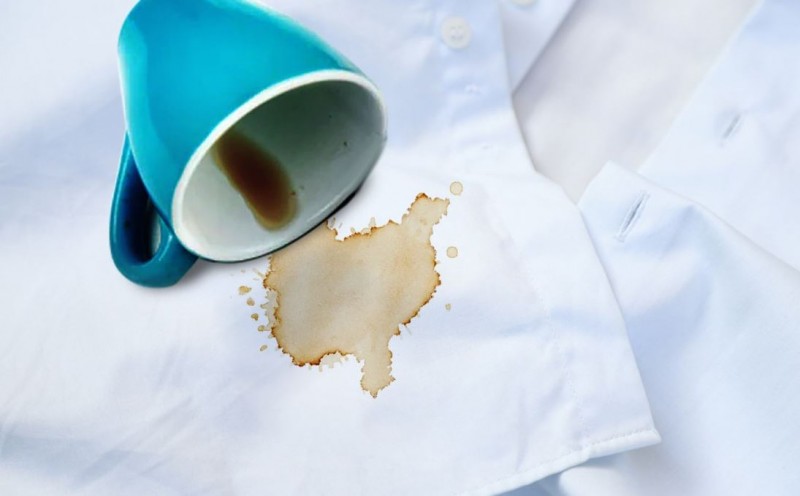
Indians savor the joy of a hot cup of tea in every season, be it the chilly winters, rainy days, or scorching summers. For many, the day begins with the comforting sip of hot tea. While some prefer enjoying it under a cozy blanket during cold weather, accidents can happen, leading to unsightly tea stains on expensive blankets. Removing these stains can be challenging, and conventional detergents may not always do the trick. However, worry not, as we bring you a fantastic trick that can help you restore your costly white blankets to their pristine condition without spending a fortune.
Application of Vinegar:
Vinegar, a kitchen staple, contains acetic acid, which acts as a potent stain remover. The first step involves applying vinegar directly to the stained area, and the quantity depends on the size of the stain. This acidic solution begins the process of breaking down the compounds responsible for the tea stain.
Detailed Explanation:
Acetic acid in vinegar is a weak acid that reacts with the tea stain's components, making it more soluble in water.
Applying vinegar directly to the stain ensures that the acetic acid is concentrated on the affected area, maximizing its stain-removing potential.
Gentle Rubbing and Soaking:
After applying vinegar, the next step involves gently rubbing it into the fabric and allowing it to sit for a duration of 20 to 30 minutes. This phase is crucial for the acetic acid to penetrate the fabric and begin breaking down the tea stain's molecular structure.
Detailed Explanation:
Gentle rubbing helps distribute the vinegar evenly across the stained area, ensuring optimal contact between acetic acid and the stain.
The soaking period allows the acetic acid to work its way into the fabric, gradually weakening the chemical bonds of the tea stain.
Vigorous Rubbing:
Following the soaking period, the stained area is subjected to vigorous rubbing. This mechanical action, combined with the continued presence of acetic acid, accelerates the breakdown of the tea stain, making it easier to remove from the fabric.
Detailed Explanation:
Vigorous rubbing generates friction, aiding in the physical removal of the weakened tea stain particles from the fabric.
The combination of mechanical action and acetic acid ensures a thorough cleaning process, even for stubborn and deeply ingrained stains.
Observing the Magic:
As the rubbing progresses, the tea stain seemingly disappears before your eyes. This step allows you to witness the effectiveness of the vinegar hack in real-time. The chemical reaction initiated by acetic acid results in the breakdown and dissolution of the tea stain, leaving the fabric looking clean and stain-free.
Detailed Explanation:
The disappearance of the stain is a visual confirmation of the successful interaction between acetic acid and the tea stain's molecular components.
It highlights the efficiency of vinegar as a natural and cost-effective stain remover.
Rinsing with Water:
The final step involves rinsing the stained area with plain water to remove any residual vinegar. This ensures that no acidic residue remains on the fabric, and your blanket is left fresh and clean.
Detailed Explanation:
Rinsing with water is crucial to neutralize any remaining acetic acid, preventing potential damage to the fabric over time.
It completes the cleaning process, leaving the blanket ready for use without any lingering vinegar scent or residue.
Why It Works:
The acetic acid in vinegar plays a key role in the effectiveness of this hack. Acetic acid, a mild acid, disrupts the chemical structure of the tea stain, making it more soluble in water. The combination of chemical breakdown and mechanical action during rubbing ensures a thorough and efficient removal of tea stains from blankets.
Alternative Option:
For those without vinegar on hand, lemon juice can serve as a suitable alternative. Lemon juice, containing citric acid, operates similarly to vinegar in breaking down tea stains. The natural acidity of lemon juice makes it an effective and readily available substitute for vinegar in this cleaning hack.
Removing tea stains from blankets doesn't have to be a daunting task. This comprehensive guide explains each step of the vinegar hack in detail, providing insights into the science behind its effectiveness. Whether you choose vinegar or opt for the alternative with lemon juice, you can now confidently restore your blankets to their pristine condition, ensuring that your cozy tea moments remain uninterrupted. Say goodbye to tea stains and hello to the joy of enjoying your favorite beverage under a clean and stain-free blanket.
Top 5 Foods to Beat Heart Disease with Recipes, Tips, and Remedies
Revamping Your Fitness Routine for a Fresh Start in 2024: A Lifestyle Transformation
How About Starting Your Morning with a Cup of Cinnamon Tea?